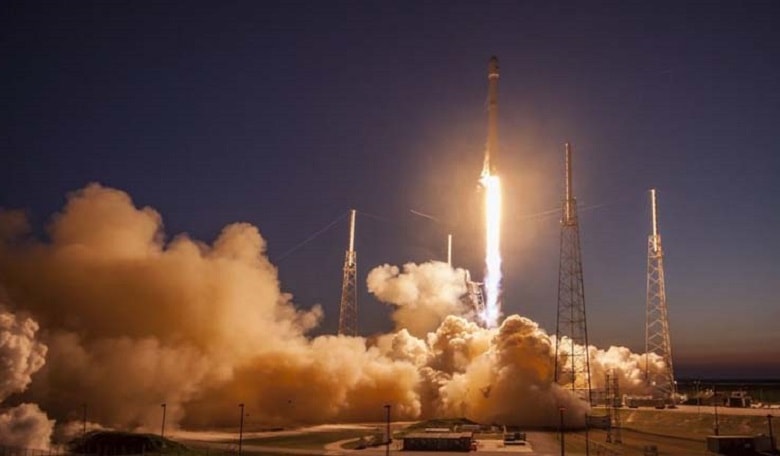SpaceX Falcon 9 has successfully launched the SES-9 communications satellite on March 4, 2016, in spite of a variety of problems that lead to the delay of the four previous launch attempts. An attempted landing of the rocket's first stage on a ship, however, was not successful.
The upgraded Falcon 9 lifted off at 6:35 p.m. Eastern from Cape Canaveral, Florida. The rocket released the SES-9 satellite into geostationary transfer orbit 31 minutes after liftoff.
SpaceX attempted to land the rocket's first stage on a ship about 600 kilometers downrange from the launch site, and the outcome of that attempt was initially uncertain, as SpaceX ended its webcast coverage of the launch without providing an update on the status of the landing attempt.
SpaceX Chief Executive Elon Musk later tweeted that the rocket “landed hard” on the ship.
SpaceX had warned prior to the mission that a successful landing was unlikely.
“Given this mission’s unique GTO [geostationary transfer orbit] profile, a successful landing is not expected,” the company stated in the mission’s press kit.
“Didn’t expect this one to work,” Musk tweeted, citing high reentry speeds, “but next flight has a good chance.”
This was the fifth attempt to launch SES-9. SpaceX canceled the previous attempt (March 1) several hours before the scheduled liftoff time, citing high upper level winds that would have acted like a “sledgehammer” on the rocket had it flown through them, according to Musk.
Three other attempts were delayed because of issues associated with the rocket’s use of “supercooled” liquid oxygen. The February 28th launch attempt was cancelled immediately after main engine ignition because of a low thrust alarm. According to Musk, the liquid oxygen had warmed during a half-hour long delay in the countdown caused by a boat that had entered restricted waters offshore.
The mission was originally scheduled for launch for the fall of 2015. The Boeing-built SES-9 will operate at 108.2 degrees east in geostationary orbit. The spacecraft’s 81 Ku-band transponders will provide communications services for parts of Asia, Australia and the Middle East.
The next Falcon 9 launch is tentatively scheduled for March 30, and will carry a Dragon cargo spacecraft to the International Space Station. NASA officials said on March 2 that an exact launch date for that mission would depend on when the SES-9 launch took place.











